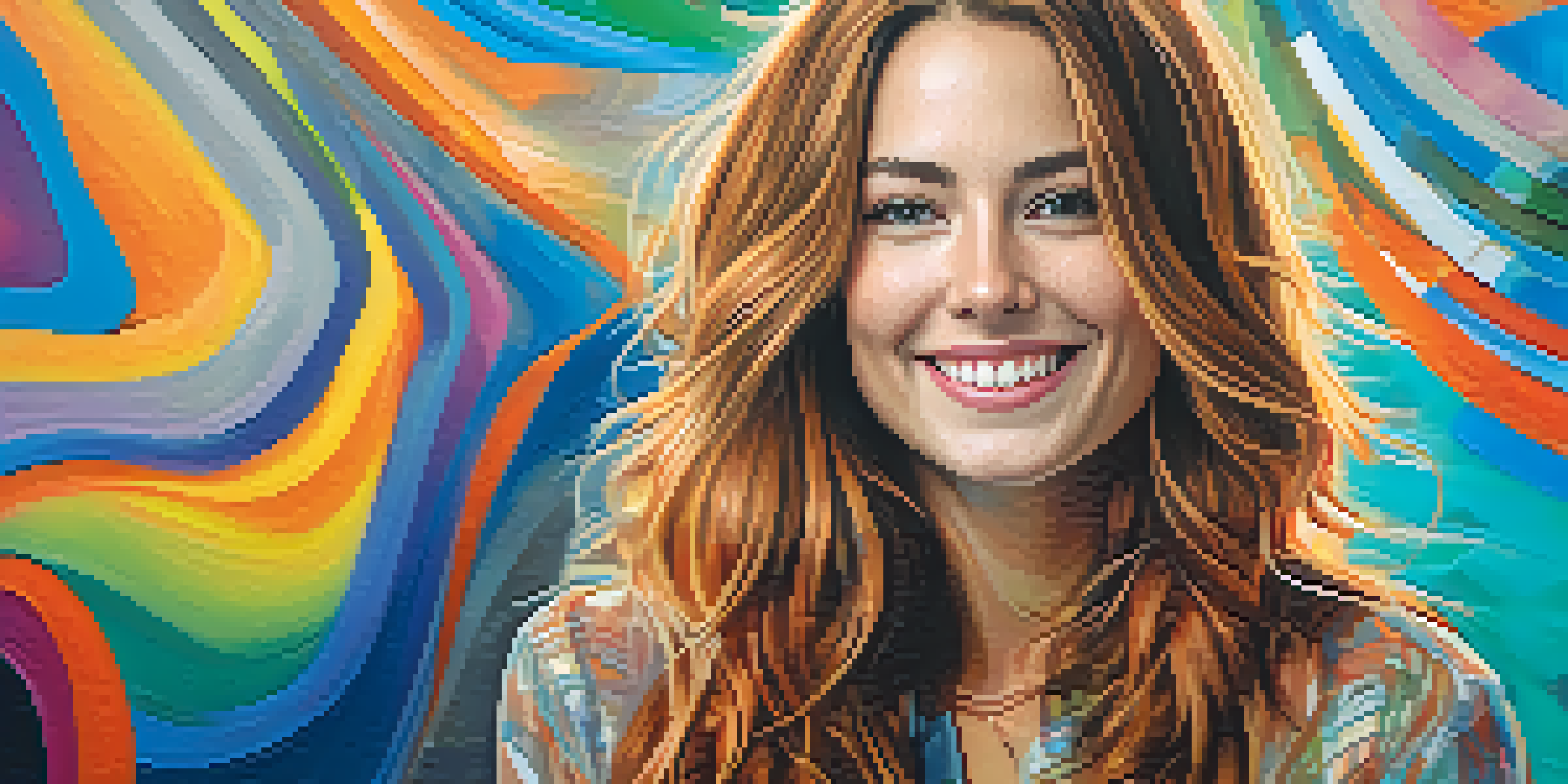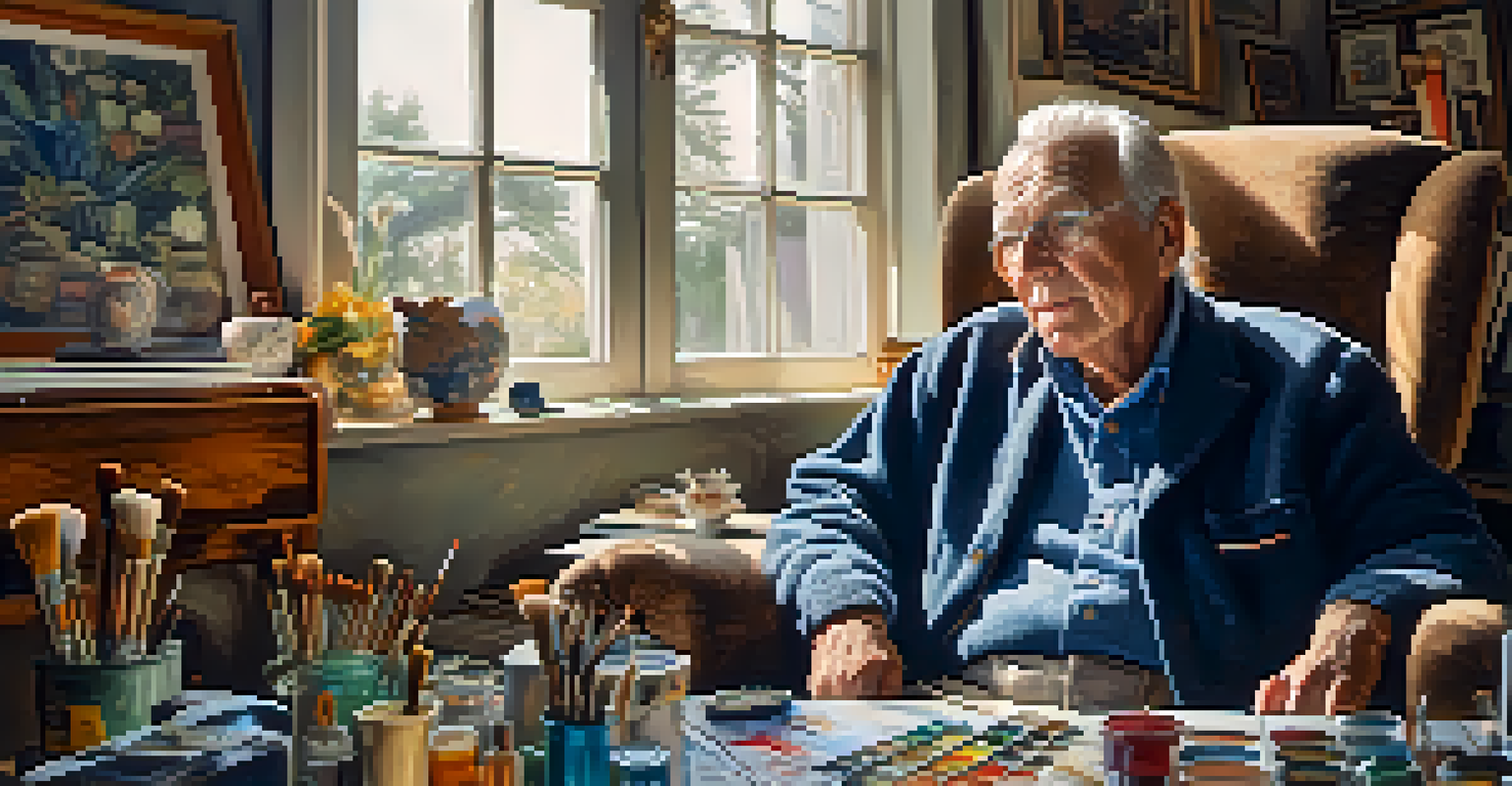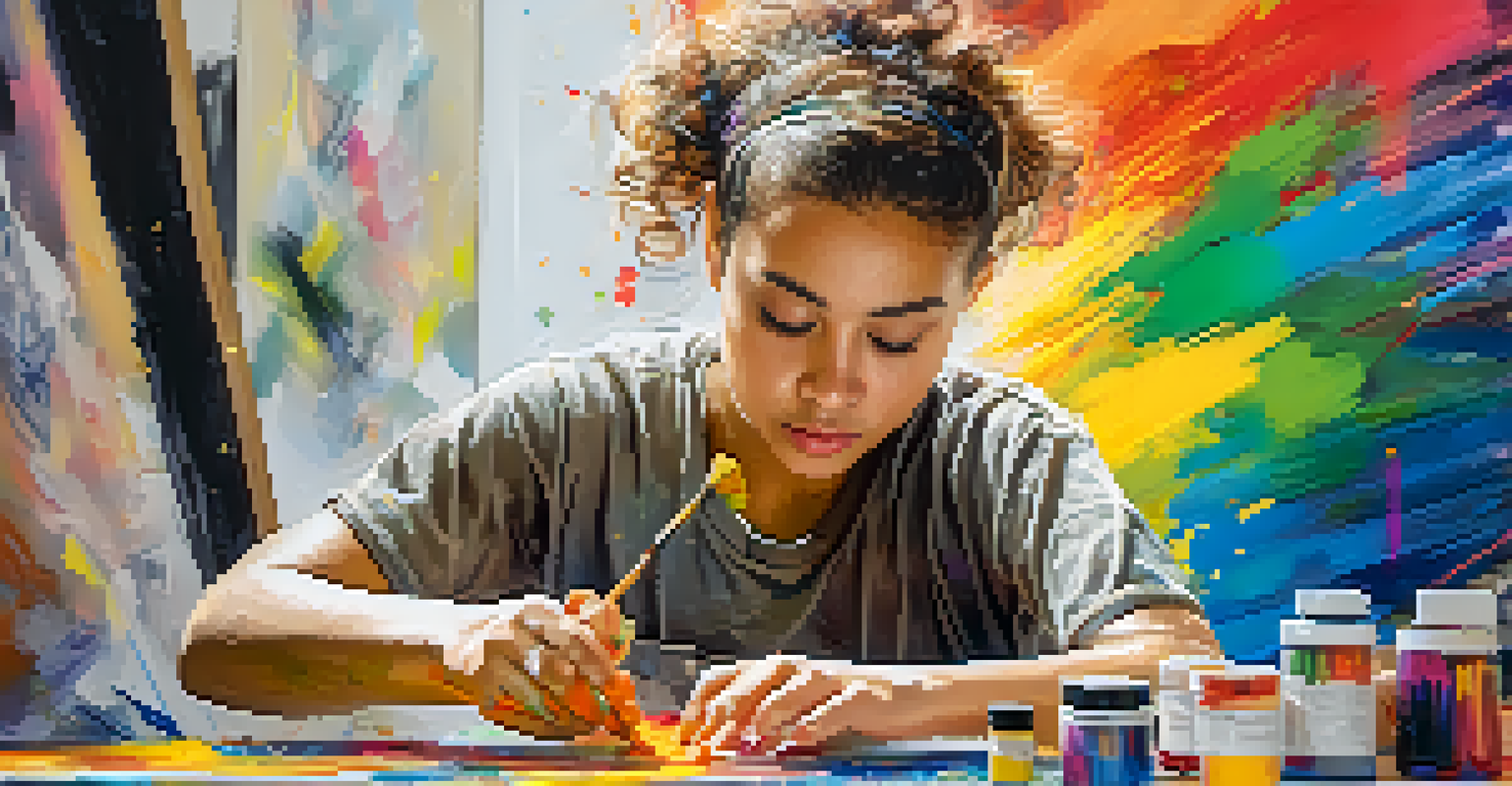Modern Portraiture: Techniques of Contemporary Artists

The Evolution of Portraiture in Contemporary Art
Portraiture has come a long way from the stiff, formal poses of the past. Today’s artists explore identity and emotion, often breaking traditional boundaries. This evolution reflects a broader cultural shift, where individual expression is celebrated and authenticity is key.
Every portrait that is painted with feeling is a portrait of the artist, not of the sitter.
Contemporary portraiture often incorporates mixed media, blending photography, painting, and digital art. For instance, artists might start with a photograph and layer paint or digital effects, creating a dynamic dialogue between different forms. This approach not only captures the likeness but also the essence of the subject in a unique way.
Moreover, the rise of social media has influenced how artists approach portraiture. Platforms like Instagram allow for immediate feedback and collaboration, leading to a cross-pollination of ideas. As a result, contemporary portraits often feel more relatable and connected to the viewer.
Techniques: Blending Traditional and Modern Methods
Many contemporary artists are revisiting traditional techniques with a modern twist. For example, classical oil painting remains popular, but artists are experimenting with color palettes and brushwork to evoke contemporary themes. This fusion not only honors the past but also redefines it.

In addition to oil painting, techniques like digital illustration are gaining traction. Artists can manipulate images with software, enabling them to create portraits that challenge conventional perceptions. This evolution exemplifies how technology can enhance artistic expression.
Identity Drives Modern Portraiture
Contemporary artists focus on personal and cultural narratives, using their work to highlight underrepresented voices and encourage discussions around acceptance.
Furthermore, some artists have embraced performance art as a form of portraiture. By incorporating movement and interaction, they invite viewers to engage with the artwork on a deeper level. This method transforms a static image into a living experience, blurring the lines between artist, subject, and observer.
Exploring Identity in Modern Portraits
Identity is a central theme in modern portraiture, as artists delve into personal and cultural narratives. For instance, some artists focus on marginalized communities, using their work to highlight stories that might otherwise go unheard. This emphasis on representation fosters a greater understanding and connection between the subject and the viewer.
Art is the most beautiful of all lies.
Additionally, the exploration of gender and sexuality plays a significant role. Many contemporary artists challenge traditional norms by portraying their subjects in unconventional ways. This not only reflects the fluidity of identity today but also encourages conversations around acceptance and diversity.
By focusing on identity, modern portraiture becomes a powerful medium for storytelling. Each piece invites viewers to reflect on their own experiences and biases, creating a more inclusive dialogue around art and society.
The Impact of Technology on Portraiture Techniques
Technology has profoundly transformed how artists create portraits, opening up new avenues for expression. Digital tools allow for intricate detailing and layering that was once painstakingly labor-intensive. Artists can now experiment without the fear of ruining a canvas, fostering creativity.
Moreover, techniques like 3D modeling and augmented reality are reshaping the portraiture landscape. Artists can create immersive experiences that engage viewers in ways traditional methods cannot. Imagine walking through a gallery where portraits come to life through projection—it's a thrilling intersection of art and tech.
Technology Transforms Artistic Expression
Digital tools and techniques like augmented reality allow artists to create immersive and intricate portraits, reshaping traditional concepts of representation.
However, while technology offers exciting possibilities, it also raises questions about authenticity. Some argue that reliance on digital methods can dilute the emotional connection found in traditional art. Striking a balance between innovation and genuine expression remains a key challenge for contemporary portrait artists.
The Role of Social Media in Shaping Modern Portraiture
Social media platforms have revolutionized how artists share their work and connect with audiences. Artists can showcase their portraits to a global audience instantly, allowing for wider recognition and appreciation. This democratization of art has created space for diverse voices in the portraiture scene.
Additionally, social media fosters collaboration among artists. Many engage in challenges or collective projects, blending their styles and techniques. This camaraderie not only enriches their individual practices but also pushes the boundaries of what portraiture can be.
Moreover, viewers play an active role in shaping modern portraiture through their engagement. Comments, shares, and likes can influence an artist's direction, making the process more interactive. This evolving relationship between artist and audience transforms how we perceive and appreciate portrait art.
Case Studies: Notable Contemporary Portrait Artists
Several contemporary artists are making waves in the portraiture world today. For instance, Kehinde Wiley is known for his vibrant, large-scale portraits that celebrate African American identity. His work not only challenges historical representations but also reclaims power through art.
Another notable figure is Cindy Sherman, who uses photography to explore themes of identity and femininity. By transforming herself into various characters, Sherman prompts viewers to question societal norms and the roles we play. Her innovative approach showcases how portraiture can transcend mere likeness.
Social Media Shapes Art's Future
Platforms like Instagram enable artists to connect globally and collaborate, influencing their work while fostering a more interactive relationship with audiences.
Lastly, the works of Frida Kahlo remain influential, even in contemporary discussions. Her self-portraits delve into personal pain and resilience, resonating with many artists today. Kahlo’s legacy continues to inspire new generations to explore their identities through portraiture.
Future Directions in Modern Portraiture
As we look toward the future, modern portraiture is poised to evolve even further. With advancements in technology, artists will likely continue to experiment with new mediums and techniques. The blending of virtual reality and portraiture could redefine how we engage with art and its subjects.
Moreover, the ongoing dialogue around social issues will persist in shaping contemporary portraiture. Artists will continue to address topics such as race, gender, and climate change, using their work as a platform for advocacy. This commitment to social commentary ensures that portraiture remains relevant and impactful.

Ultimately, the future of modern portraiture lies in its ability to adapt and resonate with audiences. As artists embrace innovation while staying true to their roots, we can expect to see a rich tapestry of portraits that reflect the complexities of the human experience.